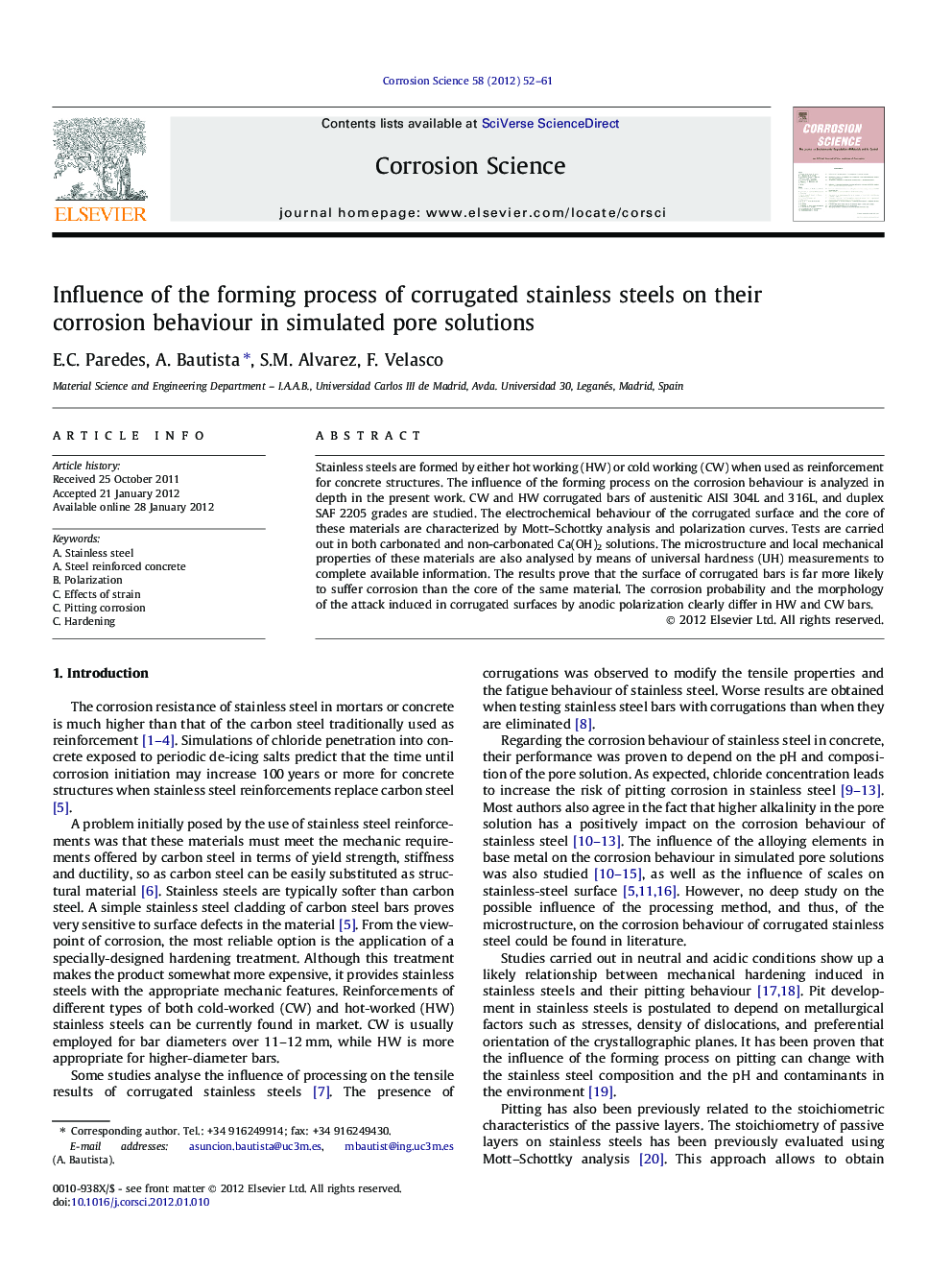| Article ID | Journal | Published Year | Pages | File Type |
|---|---|---|---|---|
| 1469574 | Corrosion Science | 2012 | 10 Pages |
Stainless steels are formed by either hot working (HW) or cold working (CW) when used as reinforcement for concrete structures. The influence of the forming process on the corrosion behaviour is analyzed in depth in the present work. CW and HW corrugated bars of austenitic AISI 304L and 316L, and duplex SAF 2205 grades are studied. The electrochemical behaviour of the corrugated surface and the core of these materials are characterized by Mott–Schottky analysis and polarization curves. Tests are carried out in both carbonated and non-carbonated Ca(OH)2 solutions. The microstructure and local mechanical properties of these materials are also analysed by means of universal hardness (UH) measurements to complete available information. The results prove that the surface of corrugated bars is far more likely to suffer corrosion than the core of the same material. The corrosion probability and the morphology of the attack induced in corrugated surfaces by anodic polarization clearly differ in HW and CW bars.
► Forming process of corrugated stainless steels determines the corrosion behaviour. ► The stoichiometry of passive layer is higher in the core than in surface of the bar. ► The core of corrugated bars presents lower pitting probability than bar surface. ► Hot-worked bars need minor polarizations than cold worked bars for corrosion onset. ► Cold-worked grades corrode in a more localized way than hot worked grades.
